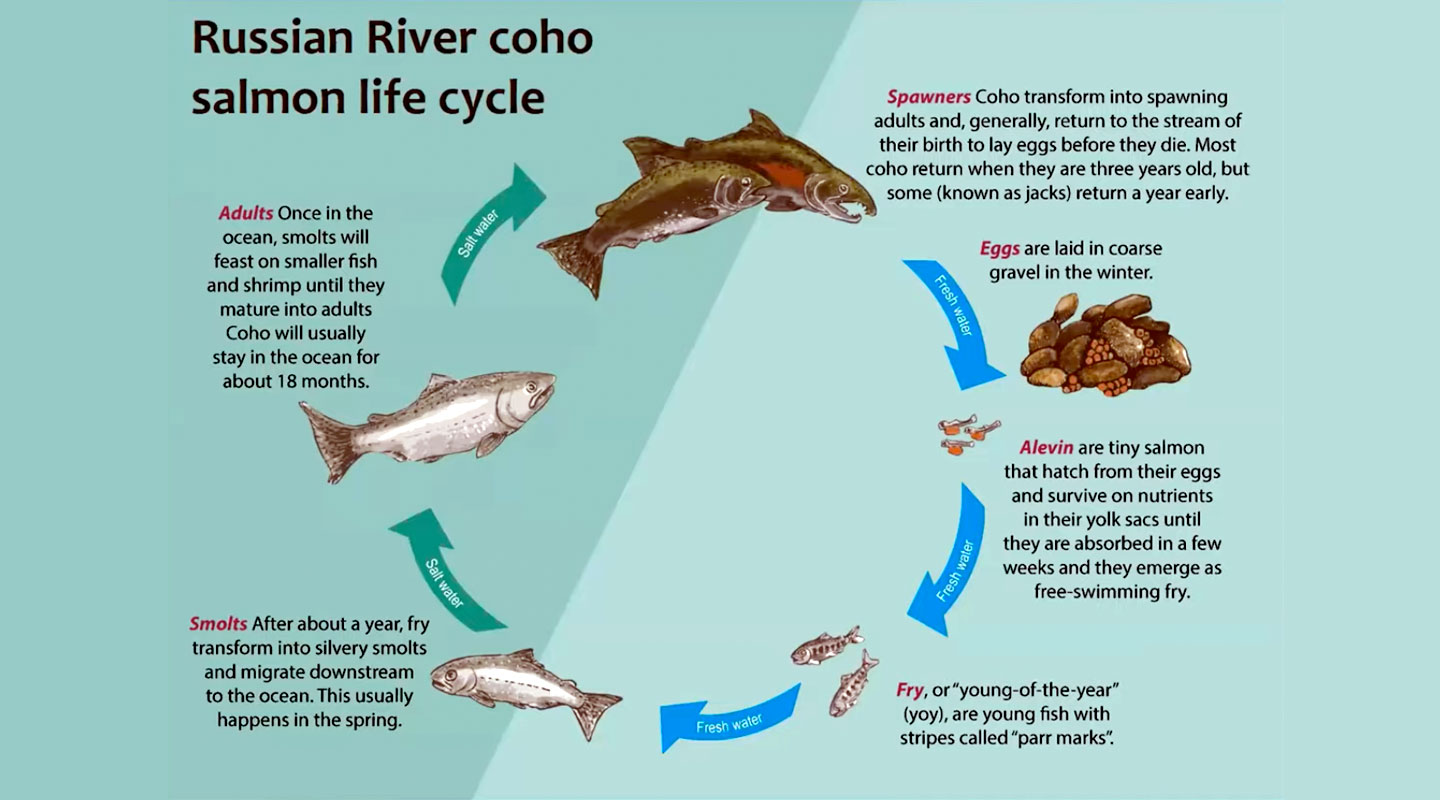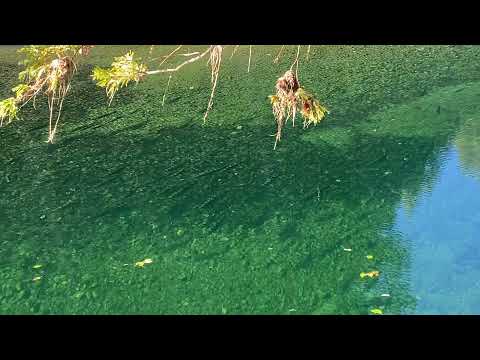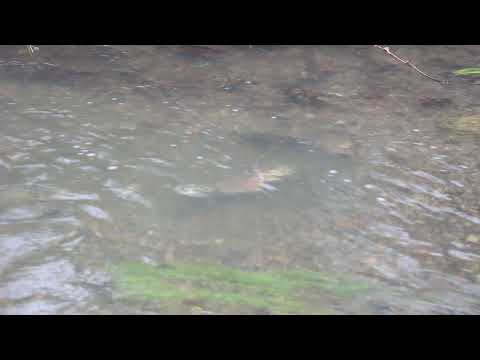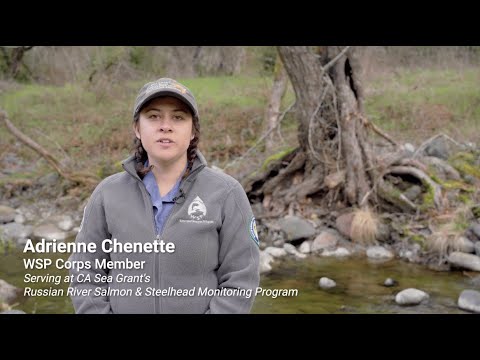Salmon and Steelhead
Monitoring
California Sea Grant is working to help recover endangered coho salmon and threatened steelhead populations under the leadership of Extension Specialist Mariska Obedzinski. For nearly two decades, we have been monitoring these keystone fish and environmental conditions in Russian River streams to document status, trends, habitat suitability and limiting factors.
While some of our former field monitoring has transitioned to Sonoma Water, we continue to work closely with partners to conduct research and support salmonid recovery efforts in the Russian River basin and throughout coastal California.
Fish Monitoring
Our research has been funded by the US Army Corps of Engineers, Wildlife Conservation Board, National Fish and Wildlife Foundation, NOAA Fisheries and California Department of Fish and Wildlife, with contributions from Sonoma Water and other partners. This work is made possible through the gracious support of hundreds of private landowners throughout the Russian River watershed.
Adult Returns
The number of returning adults is an important metric in coho salmon recovery, as these fish are the basis of future wild coho populations. NOAA Fisheries has established a recovery target of 10,100 adult coho salmon returning each winter to the Russian River basin.
Juveniles
Summer snorkel surveys are used to document the presence and spatial distribution of juvenile salmonids in lower Russian River streams, and to determine relative abundance by counting the number of wild coho salmon and steelhead young-of-year (yoy) observed.
Outmigrating Smolts
Traps are operated on key tributaries each spring to monitor coho smolts (one-year old fish) as they make their way downstream to the ocean. Data are used to ascertain migratory patterns in relation to environmental conditions, and to quantify smolt abundance, overwinter survival and growth.
pit-tag technology
Biologists use tiny devices called Passive Integrated Transponders (PIT) tags to identify and track individual coho salmon at all life stages, and generate population estimates, using channel-spanning antennas on streams throughout the lower Russian River watershed.
Reports & Publications
Outcomes from our research have been documented in a number of reports, articles and updates. See the links below to view or download files.
Russian River watershed INFORMATION
Historically, the Russian River watershed had the largest population of coho salmon in the Central California Coast Ecologically Significant Unit and was a world-renowned steelhead fishing destination. Today, it is home to three species of threatened and endangered salmonids and a diversity of native fish and other organisms.
Russian River Videos
Our Partners
We work with a broad network of collaborative partners to support salmon and steelhead recovery and associated ecosystem restoration efforts throughout coastal California. Our partners include agency personnel, academic researchers, public, private and NGO resource professionals, and hundreds of community members throughout the Russian River watershed.
Seen in the Press
CONSERVATION LETTERS | May 1, 2023
Can genetic rescue be used as a tool to save endangered species?
CBS BAY AREA | Nov 3, 2022
Drought impact on Russian River watershed challenging fish survival
KZYX ECOLOGY HOUR | Oct 12, 2020
"The fish files" Anna Halligan interviews Mariska Obedzinski
Follow Russian River Salmon and Steelhead Monitoring Program








